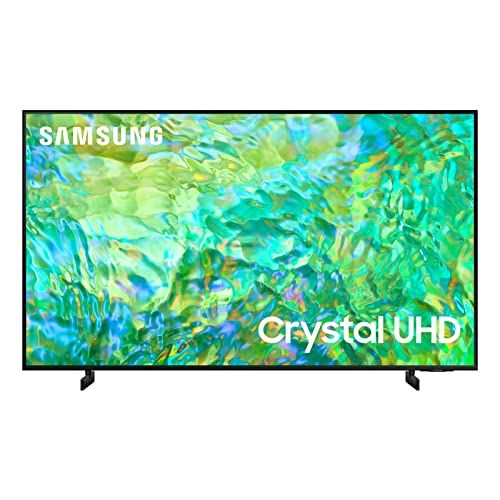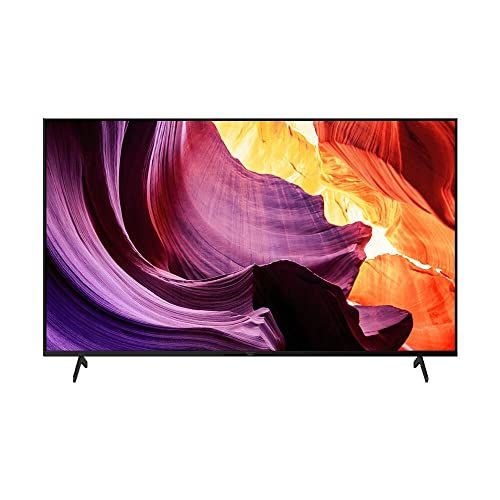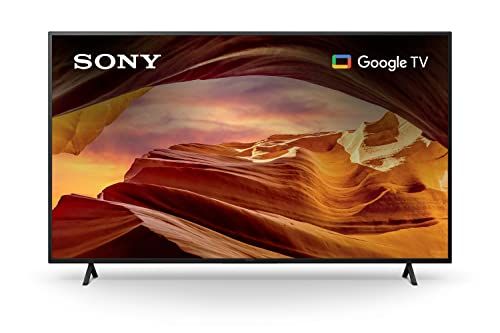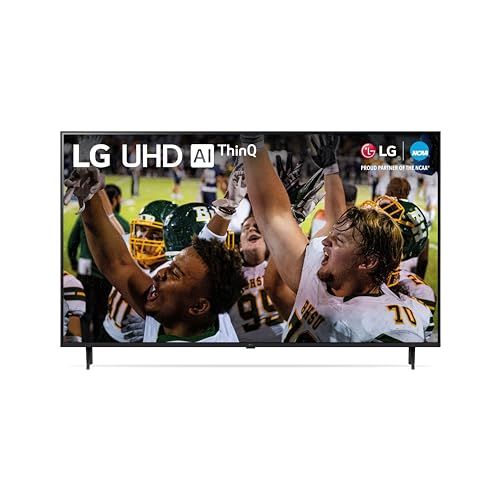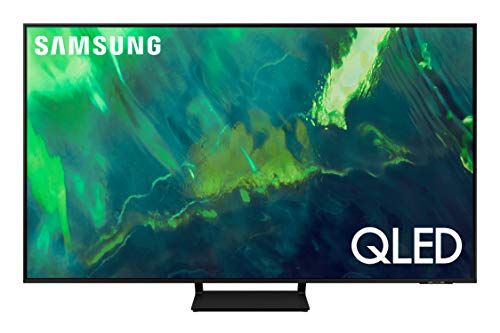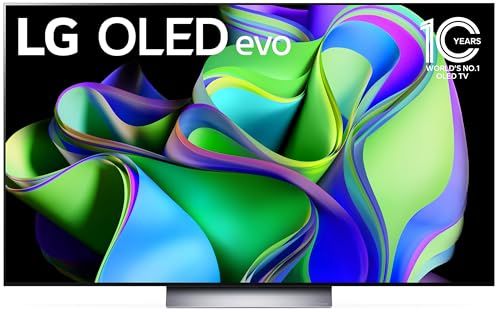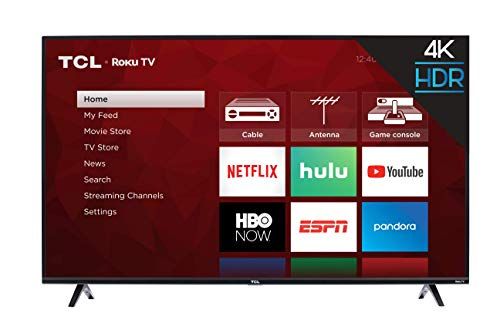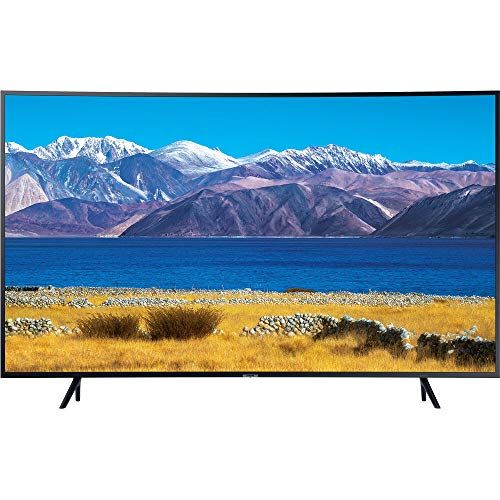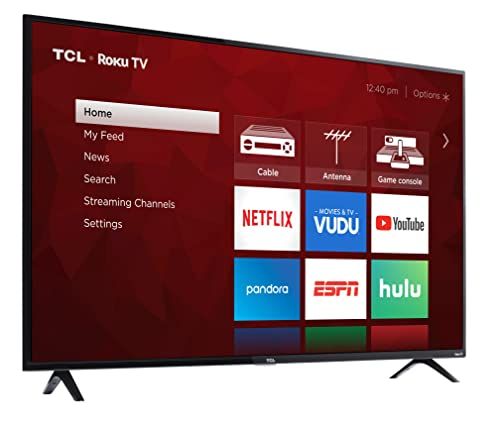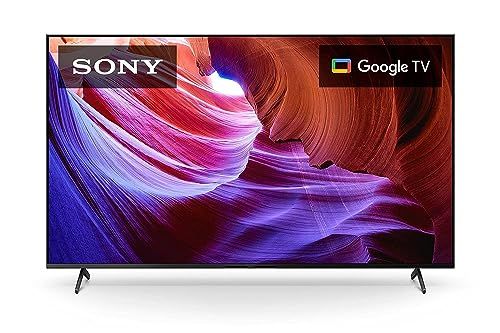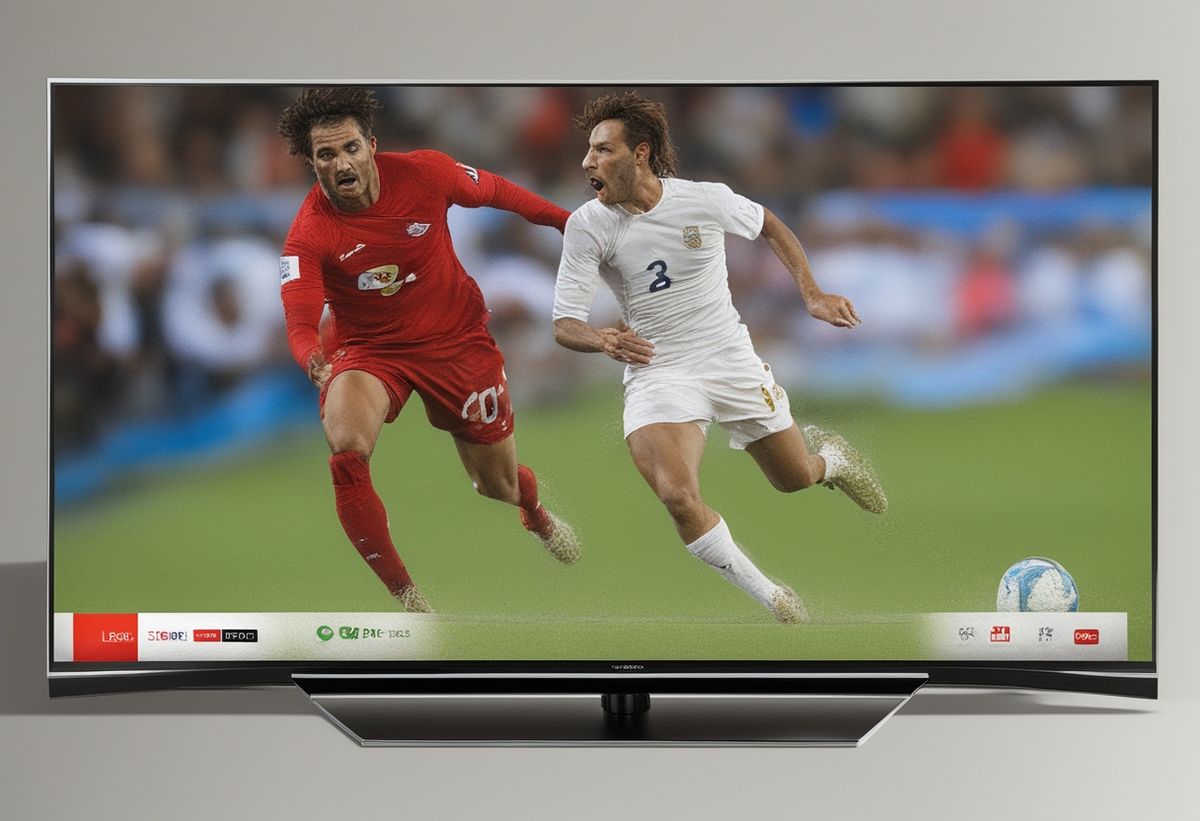
The 55-inch TV size has become one of the most popular options for home entertainment. With screens measuring 54.6 inches diagonally, 55-inch TVs offer an immersive viewing experience without dominating a room like the very largest screens. The size is well-suited to both large family rooms and master bedroom suites. Prices have also come down on 55-inch sets, making them an accessible middle ground between smaller budget TVs and extra-large premium models. With the right combination of display resolution, smart features, connectivity and sound, a 55-inch TV can serve as the centerpiece of your home theater.
Screen Size
A 55-inch TV has a diagonal screen measurement of 55 inches. This means the screen is 55 inches from corner to corner.
The dimensions of a 55-inch 16:9 aspect ratio TV screen are:
Width: 48.25 inches
Height: 27.15 inches
55-inch TVs provide a large, immersive viewing experience well-suited for living rooms and home theater setups. The generous screen real estate enables viewers to fully appreciate the scale and detail of movies, shows, sports, and games in high definition.
At a typical 8-10 foot viewing distance, a 55-inch screen fills around 40 degrees of field of view, allowing the viewer to take in the entire scene comfortably without excessive eye movement. This makes for an engaging viewing experience.
Overall, the 55-inch size strikes a great balance between providing an impactful big-screen view that's not overwhelmingly huge for most living spaces.
Resolution
Resolution determines how sharp and detailed the picture looks on a TV screen. For 55-inch TVs, some of the most common resolutions you'll see are:
4K (Ultra HD) - 4K resolution has become the new standard in 55-inch TVs. It has 4 times as many pixels as 1080p Full HD resolution, resulting in a clearer, more realistic picture. 4K offers a resolution of 3840 x 2160 pixels. At this high resolution on a 55-inch screen, it's hard to discern individual pixels, even when sitting close to the TV. 4K provides an immersive viewing experience, especially when watching native 4K content.
8K - 8K resolution delivers an even sharper image than 4K with 8,000 pixels horizontally. It has 4 times the resolution of 4K and 16 times the resolution of Full HD. However, native 8K content is still limited. Even without native 8K content, many 8K TVs use AI upscaling to convert lower resolutions to near 8K quality. If future-proofing for higher resolution content is important, 8K 55-inch TVs are available from top brands.
Display Types
When shopping for a 55-inch TV, you'll come across different display technologies including LED, OLED, and QLED. Understanding the differences between these display types can help you choose the best viewing experience for your needs and budget.
LED TVs are the most common and affordable display type. They use LED backlighting to illuminate an LCD screen. LED TVs can deliver vivid colors and deep blacks, but cannot get as bright as other display types.
OLED TVs use organic light-emitting diode pixels that emit their own light. This allows OLED TVs to produce perfect blacks and infinite contrast since each pixel can turn on or off individually. OLED TVs also offer wider viewing angles. However, they can't get as bright as LED or QLED models.
QLED TVs use quantum dot technology and LED backlights. The quantum dots produce more precise colors and better brightness compared to conventional LED TVs. QLED TVs can get very bright while still rendering deep blacks, making them ideal for well-lit rooms. But OLED TVs still beat them on contrast.
Knowing the strengths and weaknesses of each display technology will help guide you to the right 55-inch TV for your viewing preferences and room conditions. OLED excels at contrast while QLED is great for brightness. LED TVs offer the best value.
Refresh Rate
The refresh rate of a TV refers to how many times per second the image on the screen is refreshed. This is measured in Hertz (Hz). The higher the refresh rate, the smoother and crisper the motion on the TV will appear.
Most 55 inch TVs today have a refresh rate of either 60Hz, 120Hz or 240Hz:
60Hz - This is the standard and most basic refresh rate. A 60Hz TV refreshes the image on the screen 60 times per second. It is adequate for most TV watching, but fast motion scenes may exhibit some motion blur. 60Hz is common among budget 4K TV models.
120Hz - A 120Hz refresh rate means the TV refreshes twice as often compared to a 60Hz TV. This results in clearer motion and less blur, which is beneficial for watching sports and action movies. 120Hz TVs also use technology like motion interpolation to further improve clarity. Many mid-range to high-end 4K TVs are 120Hz.
240Hz - At the top end, some high-performance TVs have a 240Hz refresh rate. This quadruples the refresh rate versus 60Hz, providing extremely smooth, sharp motion for fast-paced content and gaming. While 240Hz is better, the improvements may not be hugely noticeable for most viewers over a 120Hz TV. 240Hz is found on premium 4K models.
So in summary, a higher refresh rate like 120Hz or 240Hz will make motion look crisper and smoother compared to a standard 60Hz TV. This is useful for sports fans, gamers or anyone viewing fast motion content. Check the specs and consider your needs regarding motion when choosing a refresh rate for a new 55 inch TV.
Smart TV Features
Smart TVs provide more than just a pretty picture. Modern smart TVs come with a range of features that expand functionality and convenience.
Many smart TVs now include built-in apps for popular streaming services like Netflix, Hulu, Disney+, and more. This allows you to access a massive library of movies and shows right from your TV, without the need for additional devices. Most smart TV platforms also have their own app stores with even more apps to choose from.
Voice control is another handy smart TV feature. With a voice enabled remote or built-in microphone, you can use voice commands to search for content, change settings, control playback, and more. Major platforms like LG's webOS and Samsung's Tizen OS work with digital assistants like Google Assistant, Amazon Alexa, and Bixby.
Casting or mirroring your smartphone or tablet to your TV screen is easy with smart TVs. Android phones can cast to Chromecast built-in, while AirPlay lets you mirror Apple devices. This makes it simple to enjoy mobile content and apps on the big screen.
Many other convenient features come standard on smart TVs today, like being able to browse the web, use apps simultaneously in split screen, stream music, and control your smart home devices. With their connectivity and expanding features, smart TVs have become central hubs for both entertainment and managing your connected household.
HDR Formats
HDR (High Dynamic Range) refers to the TV's ability to display a wider range of brightness levels. There are several HDR formats that are supported on most new 55 inch TVs:
HDR10 - This is the most common HDR format. HDR10 TVs can reach up to 1,000 nits of peak brightness and display 10-bit color depth, which allows for more gradual shifts between brightness and color levels. Most 4K UHD Blu-rays use HDR10.
Dolby Vision - Dolby Vision builds on HDR10 by adding dynamic metadata that allows the TV to optimize HDR scene-by-scene. TVs with Dolby Vision can reach up to 4,000 nits peak brightness with a color depth up to 12-bits. Dolby Vision is supported on some streaming services like Netflix and some Ultra HD Blu-ray discs.
HLG (Hybrid Log Gamma) - HLG is an HDR format developed for broadcast television. It allows TV broadcasters to support HDR without needing to make significant changes to their workflows and equipment. HLG supports up to 1,200 nits brightness and 10-bit color but doesn't use metadata like Dolby Vision.
Having support for multiple HDR formats ensures your new 55 inch TV will provide an optimal viewing experience for HDR content from a variety of sources like streaming, Blu-ray and broadcast television. Most premium 55 inch TVs today support HDR10 and often add support for Dolby Vision or HLG as well.
Audio Quality
Audio quality is an important consideration when buying a 55-inch TV. With a large screen, you want sound that can match the immersive visual experience. Modern 55-inch TVs support advanced audio formats and sound technologies for a true home theater experience.
One key audio technology to look for is Dolby Atmos. Dolby Atmos enables multi-dimensional sound that seems to flow all around you. Special speakers bounce audio off the ceiling and walls, so you feel like you're inside the action. Dolby Atmos is found on many premium 55-inch TV models. The technology creates a super immersive listening environment ideal for movies and shows.
You'll also find Dolby Digital Plus on most 55-inch TVs. Dolby Digital Plus can decode surround sound with up to 7.1 discrete channels. This allows for better audio clarity and depth compared to standard Dolby Digital. For 55-inch TVs with built-in speakers, Dolby Digital Plus makes the most of the hardware to deliver impressive audio.
Some high-end 55-inch TVs also feature DTS:X support in addition to Dolby Atmos. Similar to Dolby Atmos, DTS:X creates immersive audio by adding height to surround sound. This makes the sound more realistic by mimicking how audio is heard in the real world. With DTS:X, audio seems to come at you from all directions in a hemisphere.
When evaluating 55-inch TVs, don't just consider video quality. Pay attention to supported audio formats and technologies as well. Features like Dolby Atmos and DTS:X ensure the TV can provide an engrossing entertainment experience combining both stellar visuals and sound.
Connectivity
When shopping for a new 55-inch TV, it's important to consider the connectivity options to ensure it will work with your devices and setup. Connectivity refers to the ports and wireless capabilities that allow you to connect external devices like gaming consoles, speakers, and streaming sticks.
HDMIMost modern 55-inch TVs will have at least 3 HDMI ports. HDMI is the standard port used to deliver high quality audio and video from devices like Blu-ray players, streaming sticks, and gaming consoles. Look for HDMI 2.1 which supports higher resolutions and refresh rates. The more HDMI ports, the more devices you can connect directly to the TV.
USBUSB ports allow you to connect devices like hard drives to view media files, or plug in peripherals like keyboards. At least 2 USB ports is recommended, with USB 3.0 being the latest standard for faster data transfer. USB can also be used to play media files or provide extra power to some streaming devices.
WiFiHaving built-in WiFi allows for easy streaming and smart TV connectivity without running long ethernet cables. The latest WiFi 6 standard provides faster and more reliable wireless performance. Make sure the TV supports dual-band WiFi on both 2.4GHz and 5GHz networks.
BluetoothBluetooth connectivity is useful for wirelessly pairing devices like headphones, speakers, and mobile devices. It can help reduce clutter from multiple wired connections. Bluetooth 5.0 or higher provides extended range and simultaneous connections.
Selecting a 55-inch TV with ample connectivity ensures it will work seamlessly with all your media devices and accessories for years to come. Prioritize the ports and wireless capabilities you need to match your usage and setup.
Price Range
55-inch TVs cover a wide range of prices to fit different budgets and needs. On the lower end, you can find budget-friendly options starting around $350. These affordable models provide a big screen experience while cutting costs on features and display quality.
In the mid-range, expect to pay $500 to $1,000. Mid-range 55-inch TVs balance price and performance, offering robust smart platforms, crisp 4K resolution, HDR support and decent audio. This range hits the sweet spot for most buyers.
Higher-end 55-inch TVs go from $1,000 up to $2,500. Premium models aim for the best possible picture quality with advanced display technologies like OLED, quantum dot and full array local dimming. They also boast the most powerful processors and audio systems.
At the ultra high-end, 55-inch TVs can cost $3,000 and beyond. These flagship televisions represent the state-of-the-art in home entertainment with self-illuminating OLED screens, the highest brightness and contrast, cinematic sound and extensive smart features. While expensive, they provide an unparalleled viewing experience.
With this range of prices, there are excellent 55-inch TV options at nearly every budget level. Consider how much you want to spend, then find the model that maximizes value and performance. Carefully comparing features helps find the right balance between price and quality.
55 inch TVs comparison
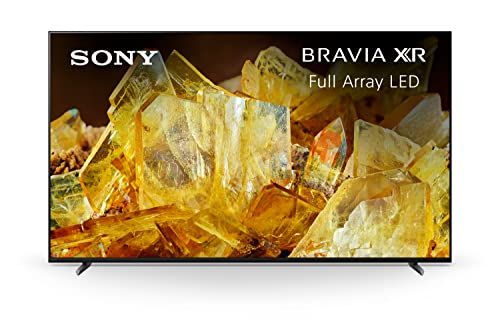 | 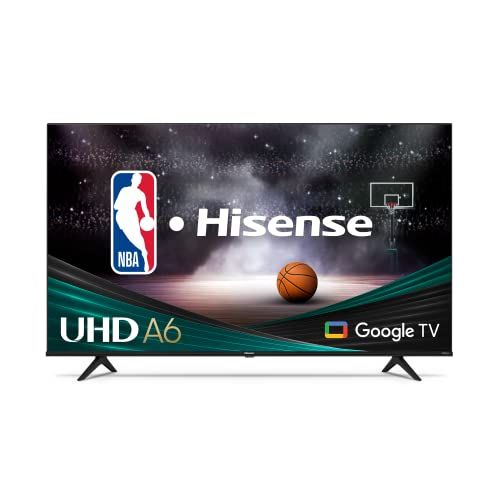 | 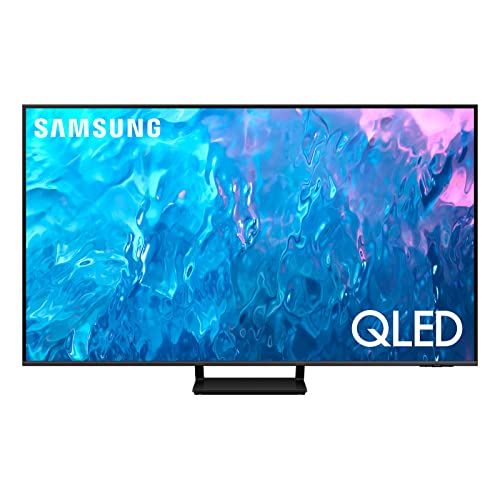 | 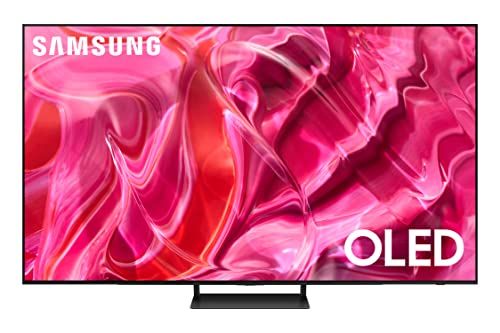 | 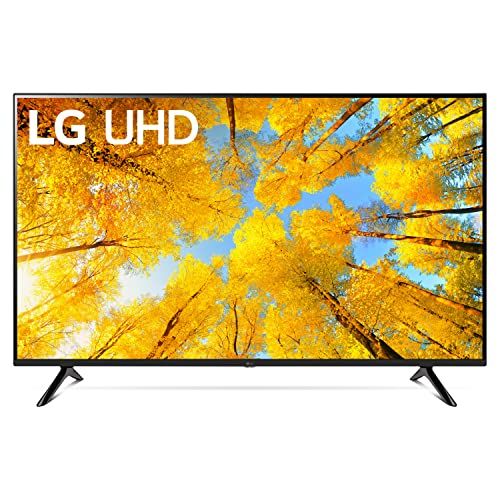 | |
|---|---|---|---|---|---|
| Model | Sony XR55X90L | Hisense 55A6H | SAMSUNG QN55Q70C | SAMSUNG QN55S90C | LG 55UQ7570PUJ |
| Brand | Sony | Hisense | SAMSUNG | SAMSUNG | LG |
| Display technology | LED | LCD | QLED | OLED | 4K UHD |
| Resolution | 4K | 4K | 4K | 4K | 4K |
| Screen size | 55 | 55 Inches | 55 Inches | 55 Inches | 55 Inches |
| Refresh rate | 120 | 60 Hz | 120 Hz | 120 Hz | 60 Hz |
| Dimensions | 13.63"D x 48.25"W x 29.13"H | 8.9"D x 48.5"W x 30.4"H | 10.1"D x 48.5"W x 30.5"H | 10.5"D x 48.2"W x 30.5"H | 10.1"D x 48.5"W x 30.4"H |
| Special feature | NEW Eco Dashboard, NEW Game Menu, Exclusive features for PlayStation® 5, Billions of colors with XR Triluminos Pro, Movies on us with BRAVIA CORE (5 credits/12 months) NEW Eco Dashboard, NEW Game Menu, Exclusive features for PlayStation® 5, Billions of colors with XR Triluminos Pro, Movies on us with BRAVIA CORE (5 credits/12 months) See more | Flat | 100% Color Volume with Quantum Dot; Real Depth Enhancer; Works with Google Assistant and Alexa, Quantum Processor with 4K Upscal; Motion Xcelerator Turbo+; Dual LED 100% Color Volume with Quantum Dot; Real Depth Enhancer; Works with Google Assistant and Alexa, Quantum Processor with 4K Upscal; Motion Xcelerator Turbo+; Dual LED See more | Neural Quantum Processor with 4K Upscaling; Quantum HDR OLED, Real Depth Enhancer; HDR10+; Works with Google Assistant and Alexa Neural Quantum Processor with 4K Upscaling; Quantum HDR OLED, Real Depth Enhancer; HDR10+; Works with Google Assistant and Alexa See more | a5 Gen5 AI Processor; Active HDR; Filmmaker Mode; Game Optimizer; Home Dashboard; 4K Upscaling; TV Sound Mode Share; Magic Explorer; Next Picks; Cloud Gaming a5 Gen5 AI Processor; Active HDR; Filmmaker Mode; Game Optimizer; Home Dashboard; 4K Upscaling; TV Sound Mode Share; Magic Explorer; Next Picks; Cloud Gaming See more |
| Special features | NEW Eco Dashboard, NEW Game Menu, Exclusive features for PlayStation® 5, Billions of colors with XR Triluminos Pro, Movies on us with BRAVIA CORE (5 credits/12 months) | Flat | 100% Color Volume with Quantum Dot; Real Depth Enhancer; Works with Google Assistant and Alexa, Quantum Processor with 4K Upscal; Motion Xcelerator Turbo+; Dual LED | Neural Quantum Processor with 4K Upscaling; Quantum HDR OLED, Real Depth Enhancer; HDR10+; Works with Google Assistant and Alexa | a5 Gen5 AI Processor; Active HDR; Filmmaker Mode; Game Optimizer; Home Dashboard; 4K Upscaling; TV Sound Mode Share; Magic Explorer; Next Picks; Cloud Gaming |
| Weight | 16 Ounces | 37.3 pounds | 37.3 Pounds | 40.1 Pounds | 23.8 Pounds |
| Country of origin | Mexico | Mexico | - | Mexico | Mexico |
| Speaker type | Acoustic Multi-Audio | Built-In | Built-In | 2.1CH | Built-In |
| Included components | Power Cable, Remote Control, AAA batteries, Stand | TV, Voice Remote Control, Power Cable, Alkaline Batteries, Quick Start Guide | User Manual, E-Manual,Power Cable | User Manual, E-Manual,Power Cable, Remote Control | Stand, Standard Remote Control, Power Cable, Remote Control Battery (AAA), Quick Start Guide |
| Supported services | Netflix, Disney Plus, Prime Video, Hulu, HBO Max, Airplay 2, Peacock, Apple TV | YouTube, Prime Video, Google Play Music, Disney+, Twitch, HBO Max, Google Play Movies & TV, Netflix, Tubi, Peacock YouTube, Prime Video, Google Play Music, Disney+, Twitch, HBO Max, Google Play Movies & TV, Netflix, Tubi, Peacock See more | Apple TV+, Samsung TV Plus, Netflix, YouTube, Prime Video, Disney+, Hulu, Xbox, Nvidia GeForce NOW, ESPN and Max Apple TV+, Samsung TV Plus, Netflix, YouTube, Prime Video, Disney+, Hulu, Xbox, Nvidia GeForce NOW, ESPN and Max See more | Apple TV+, Samsung TV Plus, Netflix, YouTube, Prime Video, Disney+, Hulu, Xbox, Nvidia GeForce NOW, ESPN and Max Apple TV+, Samsung TV Plus, Netflix, YouTube, Prime Video, Disney+, Hulu, Xbox, Nvidia GeForce NOW, ESPN and Max See more | Netflix, HBO Max, Disney Plus, Prime Video, Apple TV |
| Price | $1098 | $298 | $997.99 | $1597.99 | $366.99 |
FAQ
What is the typical resolution for a 55 inch TV?
Most 55 inch TVs today have a 4K resolution (3840 x 2160 pixels). However, you can still find some 1080p models at this size. 4K provides a sharper, more detailed picture compared to 1080p.
What types of 55 inch TVs are available?
The main types of 55 inch TVs are LED LCD TVs, OLED TVs, and QLED TVs. LED LCD TVs are the most affordable, while OLED TVs offer the best picture quality. QLED TVs from Samsung are an enhanced type of LED LCD.
What smart TV platforms are available on 55 inch TVs?
Some of the most common smart TV platforms found on 55 inch TVs include webOS (LG), Tizen (Samsung), Android TV, Roku TV, Amazon Fire TV, and Google TV. They allow you to access apps like Netflix, Hulu, Disney+, and more.
How far should I sit from a 55 inch TV?
The ideal viewing distance for a 55 inch TV is between 5-7 feet away. This allows you to see all the details without the image appearing pixelated or blurred. Sitting further may cause you to miss some quality in the picture.
What ports and connections do 55 inch TVs have?
Most 55 inch TVs have 3-4 HDMI ports to connect devices, USB ports, ethernet, optical audio out, headphone jacks, and RF antenna/cable connections. Many also have built-in WiFi and Bluetooth. Some may include composite video inputs as well.
Do 55 inch TVs come with stands or wall mounts?
Most 55 inch TVs come with stands in the box. You can also purchase wall mounts separately if you want to mount the TV. Make sure the mount is rated for the TV's weight and size. The TV's VESA mounting pattern must match the mount.
What is the refresh rate on 55 inch TVs?
Refresh rates on 55 inch TVs can vary. Entry-level models often have 60Hz refresh rates, while higher-end models may have 120Hz, 240Hz, or even 480Hz refresh rates. In general, higher rates result in smoother motion resolution for action scenes and sports.
What features should I look for in a 55 inch TV?
Key features to consider are 4K resolution, high dynamic range (HDR) for better contrast and brightness, smart TV capabilities, refresh rate, number of HDMI ports, and audio power/quality. Also consider the TV's smart platform, viewing angles, and brightness.
How much do 55 inch TVs typically cost?
The price range for 55 inch TVs is quite wide. Budget models start around $300-400. Mid-range quality models run $500-800. High-end OLED and QLED TVs can cost $1000-2000. Shop sales for the best deals.
What are the best brands for 55 inch TVs?
Top TV brands for 55 inch models include Samsung, LG, Sony, Vizio, TCL, Hisense, and Sharp. OLED models by LG and Sony provide exceptional picture quality. Samsung and Vizio offer great LED LCD options. Go with highly reviewed models for reliability.
